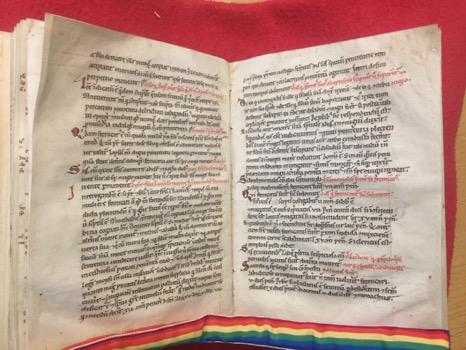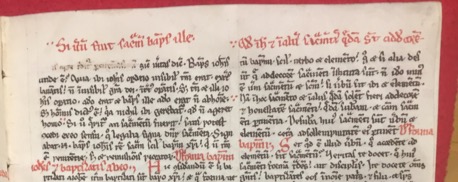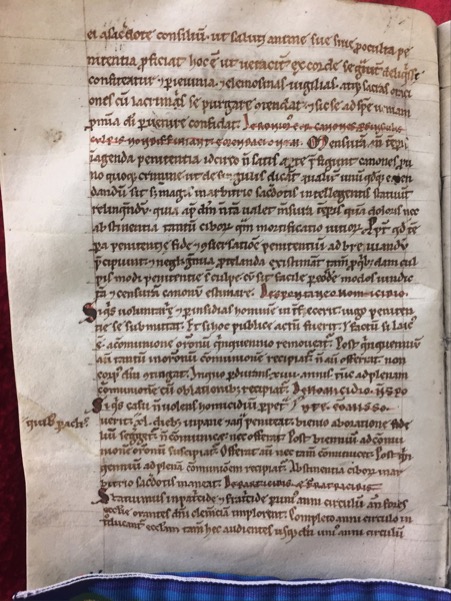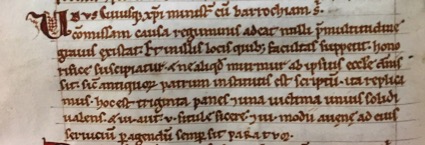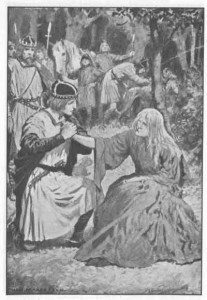Don’t forget to read Part 1 of this post first!
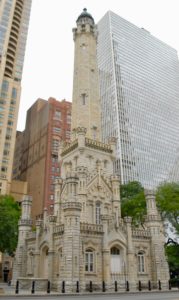
The 19th-century preference for ornate, gothic structures indicates their admiration toward this formerly maligned medieval style, and it is within this context that William W. Boyington, his water tower, and many more of his buildings sit. However, architecturally speaking, Boyington’s tower has not always received great accolades for its artistry, tending to be revered as an engineering marvel instead. One guidebook, for instance, describes it as “stylistically naive,” stating that “Chicagoans are content to venerate it as a monument rather than criticize it as art” (Schultz 143). While emblematic of the neo-gothic style, this building might lack some of the aesthetic impact to which it aspires. His water tower and pumping station, therefore, represent his most famous, though perhaps not his most successful, attempt at integrating form and function in one building design. However lacking it might be in aesthetics, the tower’s medieval inspiration is impossible to miss. Although we tend to associate gothic architecture with cathedrals and religious buildings, this castle-like structure features a few of those classic gothic elements, particularly the pointed-arch windows and doors. Despite being dwarfed by its neighboring buildings, its central tower does imbue it with a sense of verticality, but without the heavy, looming presence of a cathedral or castle. The decorative gables and emphasis on geometric patterns also derive from the tower’s gothic influences, and its castle-like qualities are enhanced by turrets and battlements (for more information on gothic and neo-gothic architecture, see the bibliography below).
![]()
Boyington carried the gothic style he adopted over to other structures as well. The Rosehill Cemetery entrance, for instance, still stands, and had more of his buildings survived the Great Fire of 1871 as well as other ravages of time and human destruction, even more of his medieval-inspired buildings would continue to line the city streets. Luckily, records of some of these buildings do survive in drawings and photos archived and digitized as part of the Ryerson and Burnham Archives: Archival Image Collection by the Art Institute. A number of the buildings documented here also appear in the neo-gothic style.

Looking at Boyington’s long list of architectural accomplishments, which extend beyond Chicago to places like Philadelphia and New York, one would be hard pressed to avoid the impression that this man built a great deal of Old Chicago and shaped its architectural character in ways that have persisted despite the domination of newer, taller structures over the city’s skyline (see Carbutt for a summary of his career). His wide-ranging work includes everything from the original trade building and the first University of Chicago to his many churches and even some residences. That his buildings appear in other major American cities also indicates a more widespread influence on the nation’s landscape. Although not the only player in the formation of Old Chicago’s appearance, perhaps one reason Boyington’s Water Tower maintains its status as a monument is that, despite its potential imperfections, it embodies so much of Chicago’s 19th-century values and priorities, both as a feat of architecture and engineering. It reflects, in other words, something essential to the original spirit of the city.

Thus, while visually the water tower might stand out as an oddity in its current location, the building more than belongs here. It provides a snapshot of a once en vogue architectural style that imports elements of medieval European aesthetics and adapts them for new uses in a new world. It also serves as a reminder of how much effort Chicago, alongside many other major American cities, put into medievalizing the American landscape in order to establish a particular national identity. However, even though this movement drew upon the European heritage of citizens who themselves came from the families of European immigrants to the new world, it is worth acknowledging the global spread of the Revival as well as the Middle Eastern influences on the original medieval Gothic style. The “global Gothic,” as Jan Ziolkowski suggests, deserves attention because “for centuries, the style has been freighted wherever European culture and commodities have been carried” (148). Moreover, as scholars have long noted, Islamic architectural and artistic influences catalyzed the original shift from Romanesque (an early medieval architectural form based on classical forms) to what we have come to know as “Gothic” (Draper. See also Ziolkowski 108-9). The history of gothic building projects, then, derives from productive (though not easy) cross-cultural exchanges that altered the course of history and, literally, shaped how the world around us looks today. From Islam to Europe in the Middle ages, and from Europe to America in the 19th century, this chain of border-crossing artistic influence pinpoints an essential factor in understanding medieval Chicago’s reliance on forms imported, reimagined, and blended into new and original settings.
Today, this historic landmark and popular tourist destination houses the City Gallery in the Historic Water Tower, showcasing the work of local artists, photographers, and filmmakers. The neighboring pumping station now contains a public library and theatre. Michigan Ave has no shortage of great shopping and entertainment, but the tower is worth a quick stop next time you visit the Mile, providing a moment of historical enrichment to break up the street’s commercialism.
As a medievalist, I feel rather drawn to the Gothic Revivalist sentiments embodied in the Water Tower, and learning about this building and its historical influences has opened up a new way of viewing the Middle Ages through a time period well outside of my own academic specialization. I will not be at all surprised should Boyington’s name pop up again while working on this series; in fact, I hope it does. But learning about the Gothic Revival has also sparked my interest in a subdivision of this movement found in the “Skyscraper Gothic” style that will more than likely lead me the Chicago Tribune Tower as we explore this gothic city.
Karrie Fuller, PhD
University of Notre Dame
Online Resources:
“Boyington, William W.,” Ryerson and Burnham Archives: Archival Image Collection, TheArt Institute of Chicago, accessed on November 1, 2018, http://digital-libraries.saic.edu/cdm/search/collection/mqc/searchterm/Boyington,%20William%20W./mode/exact.
Gale, Neil. “The History of the Chicago Water Tower,” The Digital Research Library of Illinois History Journal, published on December 3, 2016, https://drloihjournal.blogspot.com/2016/12/chicago-water-tower-history.html.
“Illinois SP Chicago Avenue Water Tower and Pumping Station,” National Register of Historic Places, National Archives Catalog, National Park Service, accessed on October 19, 2018, https://catalog.archives.gov/id/28892376.
Leroux, Charles. “The Chicago Water Tower,” Chicago Tribune, published on December 18, 2007, http://www.chicagotribune.com/news/nationworld/politics/chi-chicagodays-watertower-story-story.html.
“Throwback Thursday: Chicago Water Tower Edition,” Chicago Architecture, Artefaqs Corporation, published on March 5, 2015, https://www.chicagoarchitecture.org/2015/03/05/throwback-thursday-chicago-water-tower-edition/.
Works Cited & Further Reading
Blackman, Joni Hirsch. This Used to Be Chicago. St. Louis, MO: Reedy Press, 2017.
Carbutt, John. Biographical Sketches of the Leading Men of Chicago, 215-22 . Chicago: Wilson & St. Clair, 1868. [Written in a dated style, this book is florid, grandiose, and male-centric, but contains some useful information about Boyington nevertheless.]
Draper, Peter. “Islam and the West: The Early Use of the Pointed Arch Revisited.” Architectural History48 (2005): 1-20.
Frankl, Paul. Gothic Architecture. Revised by Paul Crossley. New Haven: Yale University Press, 1962, 2000.
Grodecki, Louis. Gothic Architecture. New York: Electa/Rizzoli, 1978.
Murphy, Kevin D. and Lisa Reilly. “Gothic.” In Medievalism: Key Critical Terms, 87-96. New York: Boydell and Brewer, 2014.
Oxford English Dictionary, s.v. “Gothic,” accessed September 20, 2018, http://www.oed.com.proxy.library.nd.edu/view/Entry/80225?redirectedFrom=gothic#eid.
Reeve, Matthew M. “Gothic.” Studies in Iconography33 (2012): 233-246.
Schulz, Frank, and Kevin Harrington. Chicago’s Famous Buildings. 5thed. Chicago: University of Chicago Press, 2003.
Ziolkowski, Jan M. The Juggler of Notre Dame and the Medievalizing of Modernity. Vol.3: The Making of the American Middle Ages. Cambridge: Open Book Publishers, 2018. http://dx.doi.org/10.11647/OBP.0146.

